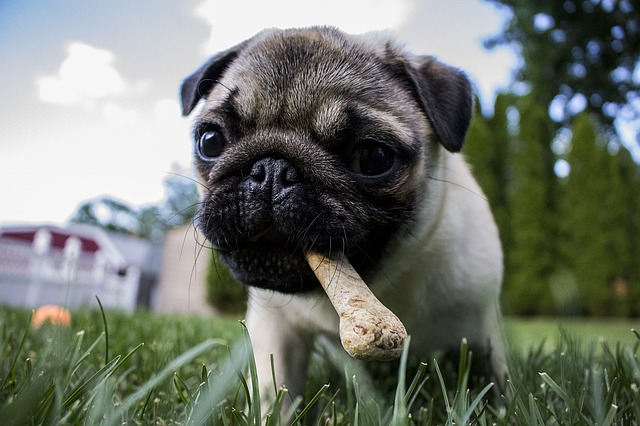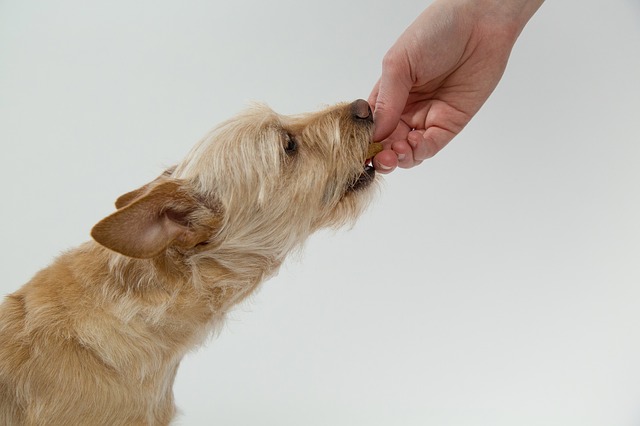Table of Contents
Dog ate ham bone? We often see bones to be a dog’s favorite food. But this isn’t necessarily true. Bones are one of the things that can be dangerous for dogs. While some bones are safe to be eaten, others – such as ham bones – should NOT be given to our four-legged friends.
If your dog has somehow eaten a ham bone, his health and life could be in danger (depending on several factors). Today, we’ll discuss what you should do in such a scenario. We’ll also talk about the effects and risks of eating ham bone.
Can Dogs Eat Raw Ham Bones?
Ham bones are considered to be good treats for dogs. Ham is a good source of fat and can be given occasionally in small amounts. However, feeding your pet ham regularly can make it obese. Cooked ham bones are not recommended for dogs. The bones can split into small fragments and damage the dog’s mouth, throat, and intestines.
Raw ham bones can be given as a treat after meals. However, they should be large enough so that the dog doesn’t swallow it. Never let your pet out of your sight while it’s chewing the bone. Vets recommend giving artificial bones to dogs rather than real ones.
Dog Ate Ham Bone? Here’s What To Do
When your dog eats ham bone, it’s possible that a few fragments will get stuck in or hurt the canine’s organs, causing a number of complications. The symptoms and their severity will depend on the size of your pet, the size of the ham bone, and the dog’s medical history.
If the dog has eaten sharp pieces, they could injure the esophagus, stomach lining, intestine, or rectum, as well as cause a blockage. As these pieces travel downward, they can scrape the lining of the intestinal tract, making it painful for the dog to defecate. This would lead to rectal bleeding or similar symptoms. It’s possible too, that these fragments could make a hole in the intestine or stomach, creating life-threatening complications.
For pets that have eaten ham bone some time ago, and you’re worried that the pieces would cause trouble, it’s okay to consider certain safety precautions. For instance, you can feed your dog slices of bread or mashed potatoes. These foods bind to bone pieces, acting as a cushion to help these pass through with ease. This can save your fur baby from any adverse reactions.
Did your dog eat ham bone but you don’t see traces of it on your pet’s feces? Consult your vet to see what can be done. He/She can perform a radiograph or endoscopy to check the stomach and intestine for leftover pieces. Remember: these should be removed to avoid major issues that could lead to a surgical procedure.
Dog Sick After Eating Ham Bone?
It’s unavoidable that your dog will eat ham bones at some point. While some canines can digest bones without any problem, there are others that experience mild to severe discomfort for hours (or days) after eating it. A few common symptoms include: vomiting, diarrhea, loss of appetite, throat pain, lethargy, coughing, and bloody stools.
If your dog experiences one or more of these problems, do consult a vet. Blood in the stool can indicate damage inside the intestine, stomach, and/or esophagus. Another thing that could be making your dog sick is that a large piece of bone may have been stuck somewhere inside it. This should be addressed immediately. Getting an x-ray is the best way to determine where the bone is.
Dog Ate Ham Bone and Now Constipated?
Depending on the size of the ham bone, it can get stuck in various places inside your dog. For example: if it becomes wedges somewhere in the stomach, it may not manage to pass further. This can result in problems such as vomiting and constipation.
Constipation is an indication of a blockage in the intestine. Your dog can also get an upset stomach. This is due to digestion difficulties, or the high calcium content in the bone. Should other symptoms arise (aside from constipation), be prepared to visit your vet.
Dog Vomiting Bone Fragments – What Does It Mean?
If your dog is vomiting bone fragments, it’s a sign that it’s trying to get rid of pieces stuck in its stomach or esophagus. The bone must have caused a blockage in the dog’s system. When the bones were chewed and swallowed, they travelled down to the stomach. But bone fragments can take a lot of time to be digested. Moreso when the dog has swallowed them quickly. Once inside, they can remain there for hours. As the stomach can’t digest them properly, they are eventually regurgitated.
Should the vomiting continue, do seek veterinary assistance immediately.





